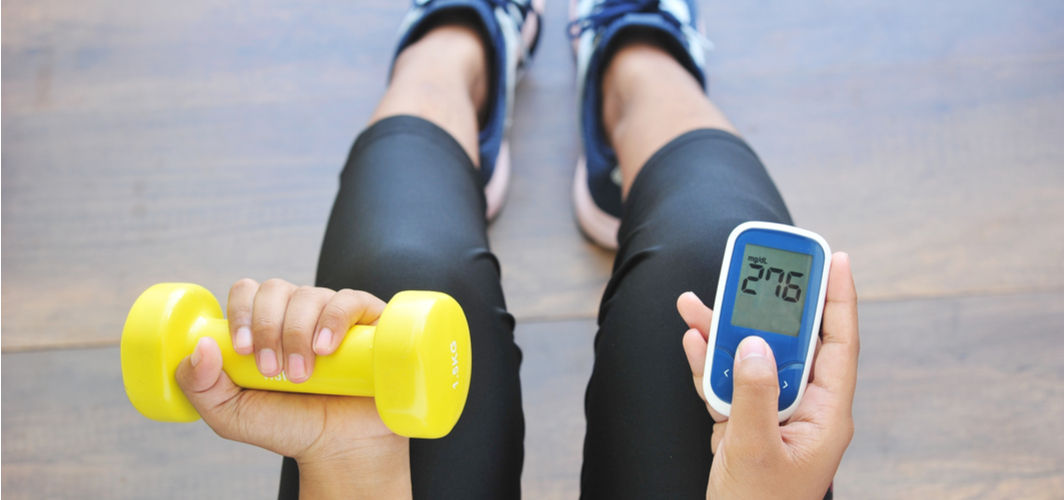General Health
A Pill To Replace Exercise: Scientists Discovered A Drug That Mimics Effects Of Sports
3 min read
By Apollo 24|7, Published on - 10 November 2022, Updated on - 11 February 2023
Share this article
0
17 likes

Everyone knows that exercising is good for strengthening bones and muscles. Professional healthcare providers and experts everywhere around the world recommend a combination of resistance exercises and weight-bearing activities regularly to maintain good muscle and bone health. Research also shows that promoting muscle strength can significantly help in relieving joint pain among those suffering from osteoarthritis.
Even though the benefits of regularly exercising are undeniable, a sedentary lifestyle is a norm in modern-day living. As per the World Health Organisation (WHO), up to 85% of the global population leads a sedentary lifestyle, making physical inactivity a serious public health concern. So, what can be done? Is there an alternative to physical exercise? Well, as it turns out, scientists are hard at work trying to figure this one out.
A Pill That Mimics the Effects of Exercise
Scientists around the world are working endlessly to determine what exactly exercise does to the body and if it can be mimicked. One of the most successful research in this field has been carried out at Tokyo Medical and Dental University (TMDU), where scientists developed a new drug screening system for identifying a compound that promotes similar changes in bones and muscles that occur during a workout. These researchers identified a compound called locamidazole (LAMZ) as a potential drug capable of causing similar effects to that of exercise.
What Did this Research Involve?
During this research, scientists found that LAMZ has the capability of stimulating the growth of bone-forming cells (osteoblasts) and muscle cells while reducing the growth of bone-resorbing cells (osteoclasts). To test this new compound, they divided a group of mice into 3 sections for two weeks:
- Mice who were given 6 mg/kg of LAMZ by injection twice daily
- Mice who were given 10 mg/kg of LAMZ orally once daily
- Control group
The administration of this compound both by injection and orally led to changes in bones as well as muscles. Researchers observed that the mice that had been treated with this compound showed increased muscle strength and wider muscle fibre when compared to those treated without LAMZ.
On testing the endurance of these mice using a treadmill device, it was found that those treated with LAMZ were less fatigued and travelled a longer distance than others.
How Does this Compound Work?
On using gene analysis, the scientists found that LAMZ boosted the number of mitochondria, a cell’s powerhouse, in bone and muscle cells. There was also a rise in the PGC-1 alpha, a protein that helps in increasing the production of mitochondria and maintaining bone and muscle cells. Furthermore, the 3D images of bone samples showed a boost in bone mineral content, density, and thickness. This supported the findings of a reduction in bone loss and increased formation.
Can a Pill Replace Exercise?
While this study has shown the positive effect of LAMZ on muscle and bone strength with no negative impact on surrounding tissues, it's not enough to replace exercise just yet. The concept of a drug mimicking the effect of exercising is being developed to help those who cannot work out due to some medical condition. Moreover, even if this drug becomes available for public consumption in future, it is advisable to follow some exercise routines rather than just popping the pills. Need more information?
Medically reviewed by Dr Sonia Bhatt.
General Health
Leave Comment
Recommended for you

General Health
A Complete Guide to Back Pains: Causes, Home Remedies, and Red Flags
Back pain is one of the most searched health-related queries on search engines. Did you know that 4 out of 5 people suffer from back pains silently? Read on as this blog highlights the top 5 different causes, remedies and red flags of back pains and when it is high time that you must consult an expert!

General Health
Plugged to Your Headphones For Long? This is Why You Should Stop It Immediately!
Headphones have become an integral part of our daily life. Whether travelling, jogging, or cooking, we remain plugged into our headphones to keep ourselves entertained. But, did you know this habit can actually cause hearing loss?
.jpg?tr=q-80)
General Health
Pale Skin, Hair Fall, Or Frequent Exhaustion? Ferritin Test May Help Diagnose Iron Deficiency
Subscribe
Sign up for our free Health Library Daily Newsletter
Get doctor-approved health tips, news, and more.
Visual Stories

The Best Exercises for Controlling Blood Sugar Levels
Tap to continue exploring
Recommended for you

General Health
A Complete Guide to Back Pains: Causes, Home Remedies, and Red Flags
Back pain is one of the most searched health-related queries on search engines. Did you know that 4 out of 5 people suffer from back pains silently? Read on as this blog highlights the top 5 different causes, remedies and red flags of back pains and when it is high time that you must consult an expert!

General Health
Plugged to Your Headphones For Long? This is Why You Should Stop It Immediately!
Headphones have become an integral part of our daily life. Whether travelling, jogging, or cooking, we remain plugged into our headphones to keep ourselves entertained. But, did you know this habit can actually cause hearing loss?
.jpg?tr=q-80)
General Health